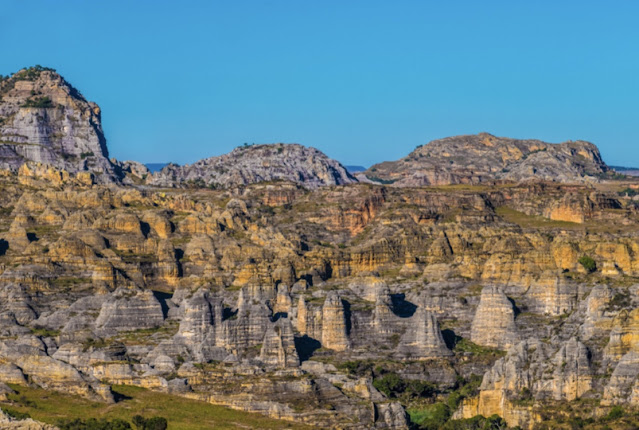Isalo National Park is famous for its dramatic landscapes, featuring deep canyons, towering sandstone domes, and unique “runiform” mountains shaped by erosion.
The park was established in 1962 in the southwestern region of Madagascar. At its heart lies the Isalo Massif, formed from ancient sandstone dating back to the Triassic and early Jurassic periods, around 200 to 250 million years ago. These rocks were created when rivers once flowed across the region, depositing layers of coarse sand that eventually hardened into thick beds of sandstone.
The park is mostly covered by dry deciduous forests, which lose their eaves during the dry season. It also includes areas of subhumid forest, where higher moisture levels support a different range of plant life. Isalo’s flora is rich in endemic species found nowhere else on Earth. Over 400 plant species have been recorded, including the distinctive tapia tree, which dominates the woodlands. Some plants such as Sarcolaena isaloensis and Schizolaena isaloensis, along with rare lichens like Isalonactis madagascariensis, are found only in Isalo.
The park’s vegetation spans a variety of habitats. These include woodlands with tough, drought-resistant trees, humid forest areas near water sources, and dry rocky zones where only specialized plants can survive the harsh conditions.
Isalo
is also home to a wide range of animals, including several species of lemurs
such as Verreaux’s sifaka, the Red-fronted lemur, and Coquerel’s giant mouse
lemur. More than 100 bird species have
been recorded in the park, including Benson’s rock thrush and the knob-billed
duck. With such an abundance of unique
plant and animal life, Isalo is a remarkable and protected natural treasure.












No comments:
Post a Comment
It's so good to see you here . . .